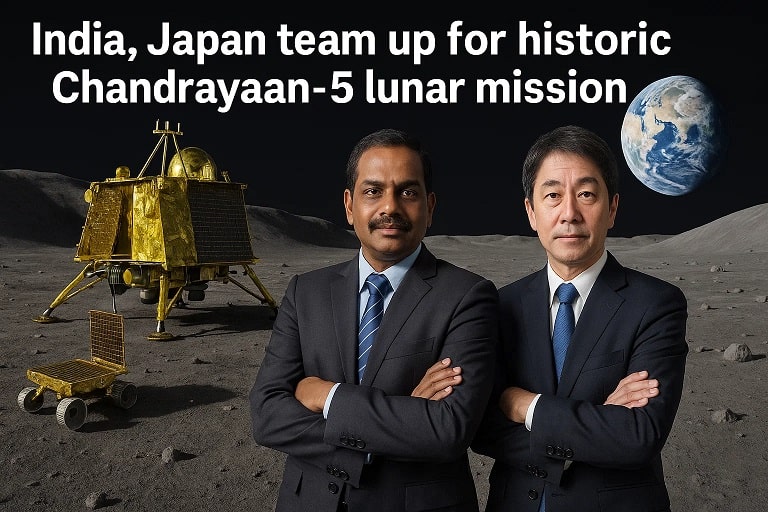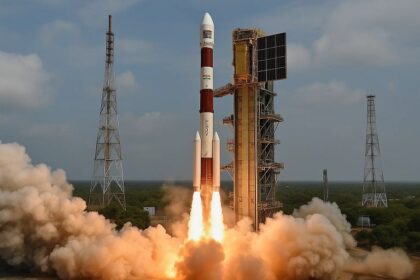India and Japan Team Up for Historic Chandrayaan-5 Lunar Mission
Mission Overview
The Chandrayaan-5 mission, also known as the Lunar Polar Exploration (LUPEX) mission, marks a historic collaboration between the Indian Space Research Organisation (ISRO) and the Japan Aerospace Exploration Agency (JAXA). Approved by the Indian government on March 10, 2025, this fifth mission in India’s Chandrayaan series aims to explore the lunar south pole, focusing on water and water-ice deposits in permanently shadowed regions (PSRs). Scheduled for launch between 2027 and 2028 aboard JAXA’s H3-24L rocket, the mission underscores a new era of international space cooperation.
Mission Objectives
- Water Exploration: Investigate the presence, quantity, and quality of water-ice, critical for future lunar habitation and resource utilization.
- Scientific Analysis: Conduct in-situ studies of lunar volatile materials using advanced instruments from ISRO, JAXA, NASA, and the European Space Agency (ESA).
- Technological Demonstration: Test lunar night survival technologies and precision landing capabilities, building on Chandrayaan-3’s success.
- Surface Mobility: Deploy a 250-350 kg rover to traverse and analyze the lunar surface, a significant upgrade from previous missions.
Mission Components
- Lander: Developed by ISRO, designed to carry the rover and scientific payloads to the lunar surface.
- Rover: Built by JAXA and Mitsubishi Heavy Industries (MHI), equipped with a 1.5-meter drill, spectrometers, and ground-penetrating radar.
- Launch Vehicle: JAXA’s H3-24L rocket, enhancing payload capacity for the 6.5-tonne mission.
- Scientific Instruments: Includes ISRO’s Mid-IR spectrometer and Ground Penetrating Radar, NASA’s Neutron Spectrometer, and ESA’s Exospheric Mass Spectrometer.
Timeline and Milestones
- March 10, 2025: Indian government approval and financial sanction.
- May 13-14, 2025: Third Technical Interface Meeting (TIM-3) in Bengaluru to finalize design and collaboration plans.
- 2027-2028: Planned launch window, targeting a landing in a PSR near the lunar south pole.
- Mission Duration: Initial 100 days, with potential extension to one year, including an attempt to explore the far side.
Significance
- Global Collaboration: Involves contributions from NASA and ESA, reinforcing India’s role in international space exploration.
- Scientific Advancement: Builds on Chandrayaan-3’s 2023 south pole landing, the first by any nation, to deepen lunar science.
- Strategic Goals: Supports India’s vision of landing astronauts by 2040 and Japan’s lunar exploration ambitions, aligning with the Artemis Accords.
- Economic Impact: Strengthens Indo-Japanese technological and industrial ties, with potential applications for Earth-based innovations.
Challenges
- Landing Site Selection: Identifying a suitable PSR with adequate lighting and communication remains complex.
- Lunar Night Survival: Ensuring the rover and lander withstand 14 Earth days of extreme cold.
- Technical Coordination: Integrating contributions from multiple agencies requires precise alignment.
Recent Developments
On August 29, 2025, during Prime Minister Narendra Modi’s visit to Tokyo, India and Japan signed the implementing arrangement for Chandrayaan-5, solidifying their partnership. The mission follows Chandrayaan-4 (2027), India’s first lunar sample return mission, and leverages the success of prior Chandrayaan missions, including Chandrayaan-1 (2008) and Chandrayaan-3 (2023).












